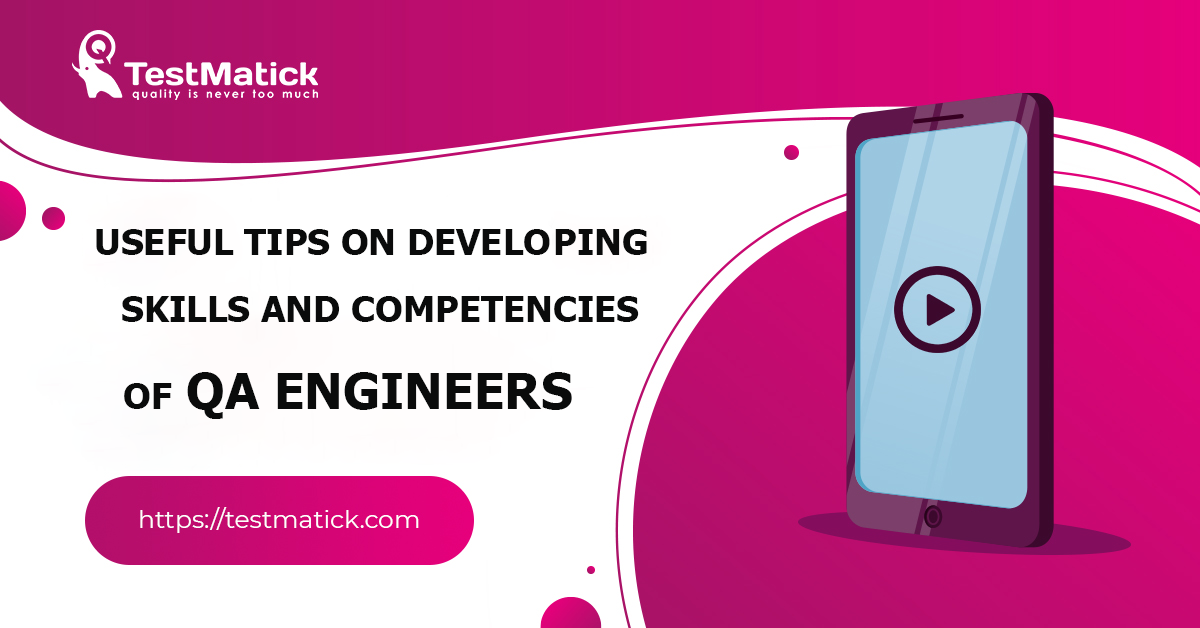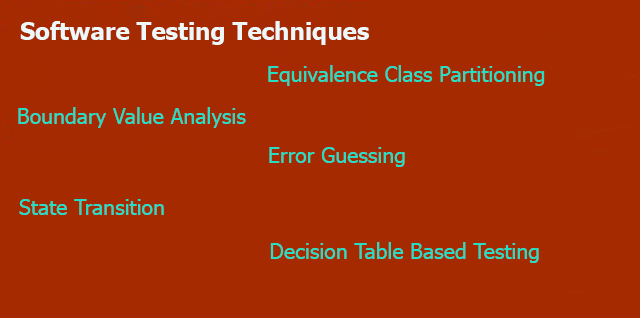We can distinguish 4 main rules which a Junior QA engineer must be familiar with, and using of which will be very useful in their professional environment. We are currently talking only about basic skills which should be memorized. You shouldn’t stop after learning them but constantly gain new skills, structure them and always search for unique solutions.
Let’s start from the rule that is the most important for everyone who decided to connect his/her job with the process of software testing:
Never stop improving your level of competence
It’s important to understand that any new information resource, any thought mentioned is a certain experience and skills, which can be used by a tester in his/her work. It’s the reason why you should be extremely attentive to everything and study new things on a daily basis.
A good way to do this is to write a list or action plan (perhaps, resources, or any skills), which you should study in a particular amount of time.
For example:
- Always remember the basic principles of testing, study its types, modes, methods. The following books will help you to do this: James Witthaker – Exploratory Software testing; Ron Patton – Software testing; Robert Kalberstone – Quick testing; Lee Copeland – A practitioner’s guide for software design, etc.
- Improve your time management, be flexible in your competences and skills you’ve gained. Studying foreign languages and particularly, English, is also very important;
- The skills and competencies you’ve gained should be used in all types of testing: security testing, automation testing, game testing. By trial and error, you should find the type of testing which can be executed completely properly and qualitatively by you;
- Soft skills in the work of a QA specialist or how to improve the communication skills and behavior in the work of a tester.
In addition to the fact that the technical skills of a tester should be absolutely developed, we shouldn’t forget about corporate communication with developers and other members of a team.
Communication is a crucial skill that is underestimated by the IT experts. And it’s not good. Since the ability to properly build a conversation or discussion in a team can help to improve its level of efficiency greatly or vice versa, turn a working process of experienced specialists into a nightmare.
So, what are the main communication skills necessary for a QA engineer who wishes to get this job or stay in his/her workplace?
Let’s analyze the most underestimated skills of a QA engineer.
The ability to listen
Every person has his/her own point of view and wishes to express it. Sometimes we don’t even wait when another person will stop talking, interrupt him/her in order to suggest our variant. Yes, it can be absolutely correct and efficient but it doesn’t always look good.
The ability to listen is an important skill of every human. In our whole professional work, we rarely meet people who are able to listen without interruption and still, hear what the others try to tell him/her. If you hear the information and therefore, perceive it, you will be able to solve the issues much faster.
Increase your social circle
Even Agile and DevOps, where developers, admins, and QA engineers work together, still have invisible boundaries and the best way to get rid of them is to communicate.
The skills of interpersonal communication of every member of a team impact its overall success. A colleague who is able to get on well with others is very important since it’s easy to build a proper process of communication with them.
While talking to a developer who has written the code that is currently being tested by you, you can study and understand much more, than if you were reading various documents for hours.
Know how and when to ask the necessary questions
The field of testing has no absolutely identical projects so, regardless of how many times you worked on the new projects, you should always start from the following questions:
- In what way will this product be used?
- The peak time of its usage?
- What are the most popular configurations of an operational system, browser?
- Who are its end users?
If you start your QA work, not from these basic statements, your quality assurance work will probably cause the risk appearing in a program. The ability to ask accurate questions, know when you should leave them opened and when to analyze everything thoroughly – these are the communication skills, needed for every QA specialist.
The ability to defend yourself
For many years much negative attitude is directed to the testing department. We mean the pressure from the ones who are interested in a QA team in terms of the project’s deadline, which is also supported by bullying from a developer side.
The reason for this is that a QA engineer can stand for himself/herself in all situations, for example, when we talk about the project’s deadline, permanent releases and demanding attitude from project managers and other team members.
Testing is the final stage of the product’s development. You should learn to defend your opinions, your ideas and decisions, supporting this by straight facts and evidence.
You should avoid “QA ping-pong” – a problem that means that one ticket is processed by the development departments and QA engineers for several times.
The reason for this may be the following:
- a developer doesn’t want to understand that nothing is perfect, refuses the QA’s errors, not even analyzing the problem, not reading the bug report or comments to it properly;
- a QA engineer marks a ticket as the failed one after executing all test iterations, when a first defect appears, not analyzing it properly;
Before you mark the bug’s status as “failed” and pass it to a developer, you should specify whether the defect affects the other ways of its usage or not. If not, you should continue testing the product, in order to find the bugs at the early stages.
Understand what is important for those who are interested in the project
Both a tester and a QA manager should make a detailed and clear message from a QA speech. They must include the solved tasks and to what extent they correspond to the requirements stated.
For example, to show a full diagram of bug transformation, you can make only 1 slide, which will include the business risks, deadline, etc., not needing to show 20 slides with absolutely useless information. Such a presentation will be not only perceived by a project manager but also valued for the efforts you have made.
Correct usage of testing tools
Every tester during the project testing uses those tools that are connected to the specifics of his/her work. Having knowledge of the main tools of testing is important for developing new skills and improving the ones a junior tester already has.
Further, we will mention the main tools used at different stages of testing
Tools for load testing:
Tools for test management and bug tracking systems:
Tools for functional testing:
If you correctly choose the tools for testing, you can be sure that a process and results of testing will be successful. Moreover, having knowledge of various tools and environments of development will help to rapidly integrate yourself into the processes of testing and development of the product.
Methods of software testing
Since exhaustive testing is impossible, the methods of testing help to decrease the number of test cases, that need to be executed, by increasing the coverage of software with tests. They help to find the conditions that in other cases are very hard to solve.
There are 5 most popular methods that every tester should know:
- Equivalence Class Partitioning – ECP. It helps us to divide test conditions into elements which are considered as identical. This method divides input part of the application into data classes, that form the final variants;
- Boundary Value Analysis – BVA. When input condition has the limitations between x and y, test cases are designed with these data, and also with the data that are below and above x and y;
- Error Guessing. This method is based on guessing a defect that can prevail in code value. In this case, a tester uses his/her previous experience, the experience of the other IT experts, in order to find an issue in a tested program. All possible bugs and situations, in which this happens, are technically calculated;
- State transition. This method of changing the input conditions helps to change the state of the tested program. In a method of state transition, a team of a testing department provides positive and negative entry values of testing in order to evaluate the software behavior;
- Decision table based testing. A decision table (or causes and effects) is used for the functions that react to choosing the entry values and events.

Software Testing Techniques
Methods of software testing are used for improving the old ones and creating new and better variants. Every QA engineer should be proficient in them.
DevOps & Agile Methodology
Since during the product development, it’s crucial to meet the terms of development and final release of a project, the testers should be familiar with DevOps technology and Agile Methodology that supports iteration and mutual working models.
Agile methodology is aimed at decreasing the time spent on testing and DevOps helps the mutual multifunctional work of a team (from the start of development, analysis, quality assurance) and this gives a possibility to get a qualitative result together with a fast release.
After studying these methods, we may understand the role of every member of a team and this, in turn, helps everyone, from developers to testers, to pay enough attention to every cycle of development and continuous execution of new projects.
Software development lifecycle (SDLC)
Usually, the system development lifecycle has 6 stages: data analysis, projecting, development and testing, implementation, document creation, and evaluation. Quality assurance of a developed product is crucial at all stages of SDLC, therefore, a tester must understand the importance of his/her work at any stage.
When QA engineers test a product at every such a stage, this gives a possibility for a company to check all the modules of a program separately. So, the bugs of a product can be found at the primary stage of product development. It’s important to remember that the responsibilities of a QA department include not only finding critical bugs in the application but also estimation of its competence regarding the main purpose of its creation.
The process of testing must be planned and run exceptionally according to the whole lifecycle of the system development and this, in turn, helps to decrease the cost of bug fixing at the primary stage. In another case, when SDLL is implemented in the project at the final stages, the cost of bug fixing will increase if it doesn’t get insoluble costs.
Instead of conclusion
The members of a QA department, both a manager and a junior quality assurance engineer, should constantly develop their skills, gain new knowledge.
The 4 golden rules described above are not the maximum in your professional development in the IT field, you should improve your skills the whole life but right these items will be a main basic start for a junior tester.











Leave A Comment